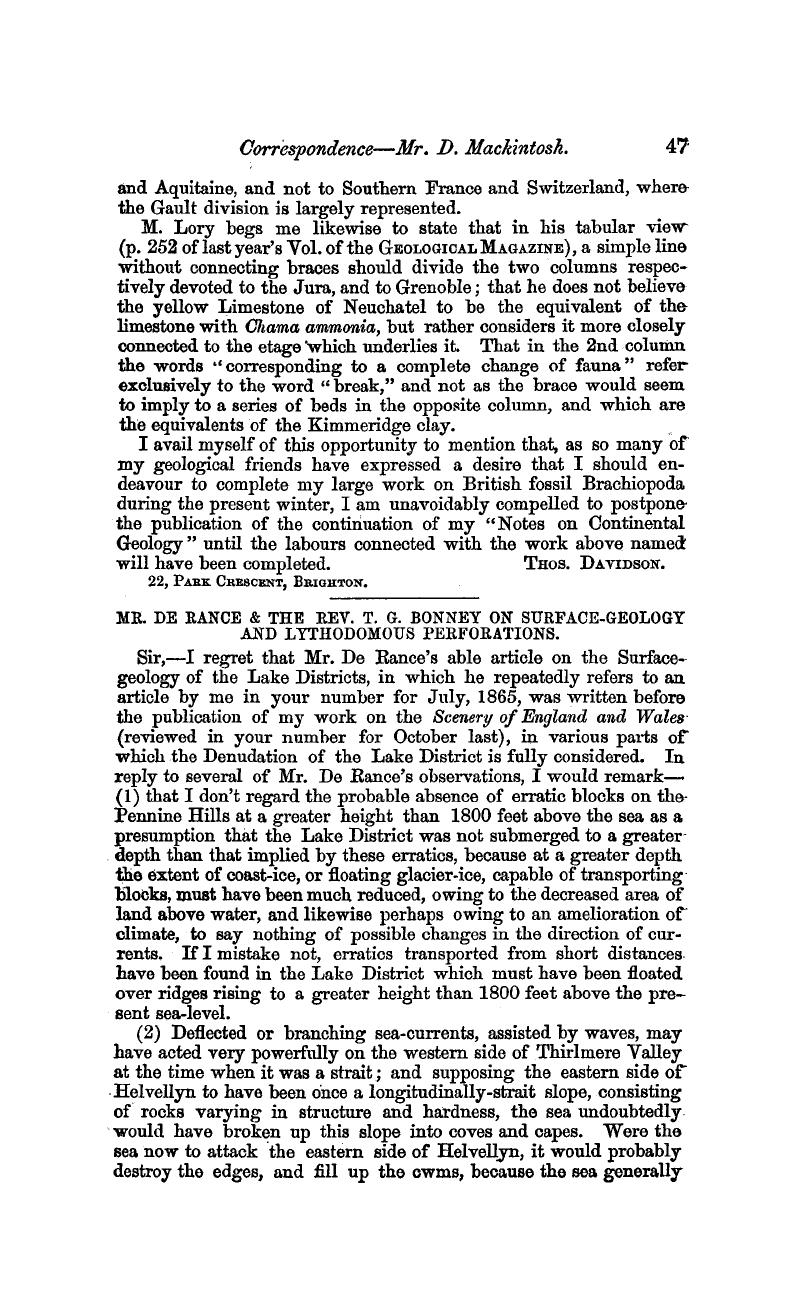No CrossRef data available.
Article contents
Mr. De Rance & The Rev. T. G. Bonney on Surface-Geology and Lythodomous Perforations
Published online by Cambridge University Press: 01 May 2009
Abstract

- Type
- Correspondence
- Information
- Copyright
- Copyright © Cambridge University Press 1870
References
1 On coasts now existing, the sea makes a headland, and in time breaks it up.
2 Or to marl-pits on the sides of drift-knolls.
3 Mr. Cameron, of the Geological Survey, Ulverstone, has in his possession a disused limestone gate-post I found on a roadside near Birkrigg Moor. On one part of it there is a group of deep holes more regularly ground out than a hole made by an iron jumper on the same slab of rock. From one of these holes Mr. Cameron extracted seventeen land-shells! Did each of the snails take a turn at boring, while the others rested from their labours ? or did one snail bore the hole, and then extend to a number of brother snails the benefit of a sheltered habitation ? The late Dr. S. P. Woodward decided against the snail-theory of M. Bouchard-Chantereaux, and Miss Hodgson, now revived by the Rev. T. G. Bonney. (See Editorial Note to my article on Pholas-borings, Geol. Mag., Vol. IV., July, 1867.)




